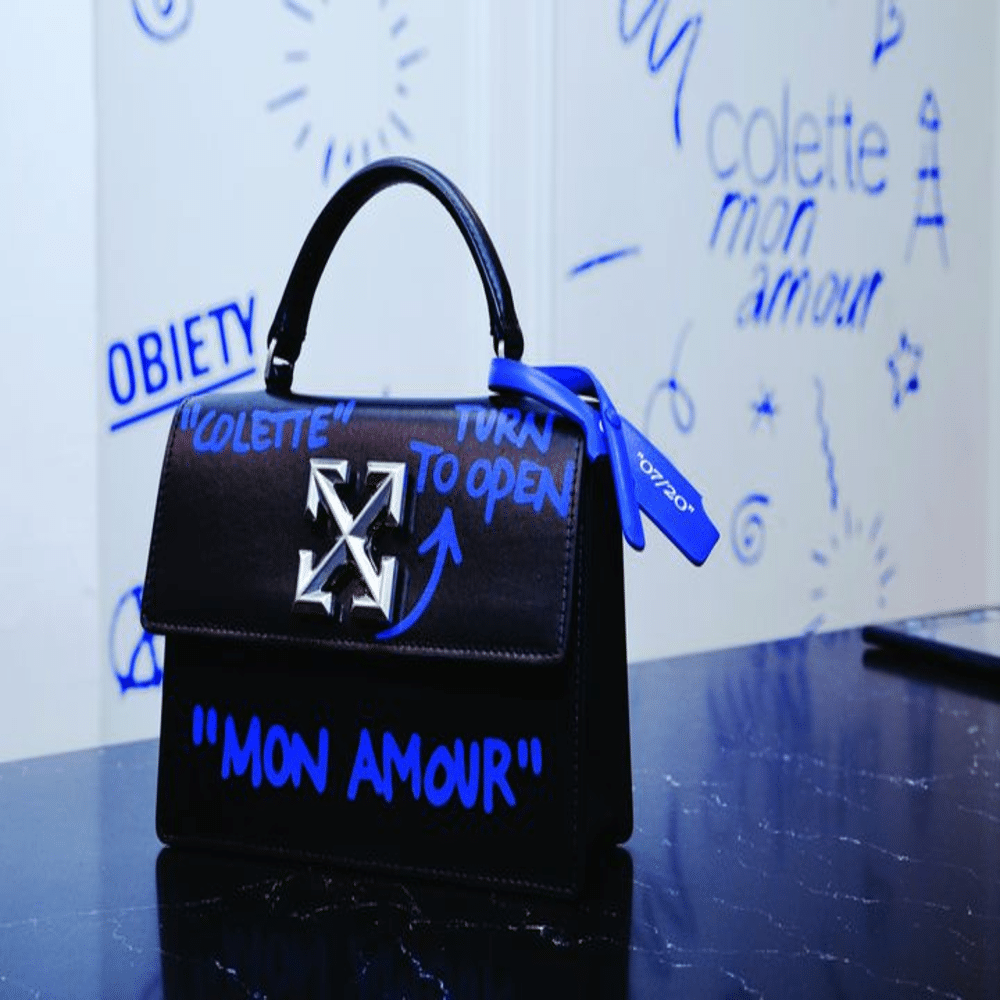[vc_row njt-role-user-roles=”administrator,armember”][vc_column][vc_column_text]
On July 12, 2017, the iconic and globally recognised concept store announced its definitive closure. Three years to the day after the end of this adventure, the documentary “Colette, mon amour” shows the last moments of the Parisian temple.
“The main driving force is my age, that’s for sure. And well, I think that with the Internet, there’s a new way of working, a new way of finding products, so I would have had a hard time – after all Sarah’s work, all the work we put into it – to see the shop less frequented or to see it go down. It would have been really hard for me. So here we are, we’re going to close the door and everyone will go on with their lives on their own. It’s something simple, we wanted it that way” these are the words of Colette Rousseaux and the end of the documentary.
Opened in 1997 by Colette Roussaux and her daughter Sarah Andelman, Colette was the Parisian consumer rendezvous par excellence. The concept store, located in the 1st arrondissement of Paris at 213 rue Saint-Honnoré, displayed fashion, design, perfumery, high technology, press, music, etc…; “StyleDesignArtFood” was the slogan of the company. The concept has not changed that much over the years, as the original aim of the shop was to offer products not known in France.
The documentary thus commemorates the life of this “historical monument” sometimes as popular as the Eiffel Tower, and is broadcast, through pop-up stores, in the largest metropolises : Paris, London, Tokyo and New York. As usual and even after its closure, Colette continued to impress us with a pop up store in collaboration with the Kitsuné house. This collaboration had chosen Paris as the location, in the Jardin des Tuileries, in which a “souvenir shop” was opened for 10 days. This Pop Store was therefore entirely dedicated to Colette and offered limited edition products and artists’ works.
So what do we retain of this unique temple and the documentary in its effigy ?
Colette was an excellent marriage between luxury and originality, and allowed her enthusiastic customers to come out with a product that was more than trendy but unique. The shop obviously departed from the codes of a traditional shop and this is what made it successful, as it was not just a shop. Words are lacking to describe this place of treasures, it was a museum, an art exhibition, for any creator, brand or artist who was voluntarily put forward. They were the ones who put themselves in the spotlight and not the creators of the shop. The latter had also equipped itself with an art gallery and a restaurant in the basement, enough to spend a whole day there without being able to visit everything. Yes, because Colette was more like a place to visit than just a place to shop.
Colette’s reputation was such that it was able to overshadow brands; owning a Colette product had become more than a desire on the part of the customer, even if it meant putting aside aesthetics or functionality and standing in line for hours. It is possible to speak in hours, but also in days; for the small anecdote, a Belgian customer had waited four days and four nights in his car to get access to a pair of Stan Smith’s sold in limited edition.
The exclusivity of the products thus made Colette an unmissable destination and was so attractive that the biggest celebrities became accustomed to going there and buying their supplies. Among them : Virgil Abloh, Kanye West, Emmanuel Perrotin and Pharrell Williams.
“You only realise what you have when you lose it…” said Kanye West.
Moreover, there was something for everyone in this shop, it was a meeting place for all styles, with a wide variety of products and ranges. The likelihood of a visitor leaving the concept shop empty-handed was therefore virtually non-existent.
20 in existence and yet a shop that never goes out of fashion ; the figures don’t lie: 28 million euros in turnover in 2016 and 35 in 2017. In total, Colette has presented 8599 brands, organised 300 exhibitions, published 37 compilations and 92 podcasts, organised 2889 events and presented 2079 different shop windows.
A work that Colette and her daughter can be proud of. For 20 years, the two women gave themselves entirely to the satisfaction of Colette’s clients, who never budged. Over the years they have been able to offer the whole world product selections and collaborations as if they knew exactly what customers wanted. Each product was the encounter of a different culture and style that could not have been thought of by anyone other than Sarah Andelman, the creative director. Who could have used Adidas, Chanel and Pharrell Williams to create a pair of Stan Smith ? Who would have had the audacity in the luxury sector to collaborate with the PSG football club ?
“In collaboration, I am thinking of Chanel of course, but also of other major houses such as Hermès, Cartier or Louis Vuitton who are not used to working with multi-brand shops and who have made an exception for Colette. I’m also thinking of IKEA with whom we had an operation and with whom everything was complicated because they had never sold outside their shop. Or Apple, whom we contacted as soon as the first iPod came out. But these challenges were really part of the fun,” said Sarah in an interview with FranceInfo about the most complicated collaborations and exhibitions to obtain.
But in spite of its fame, the brand closed its doors, following in the footsteps of its creator Colette Rousseau who decided to retire. And as Loïc Prigent, a journalist, put it, “colette cannot walk without Colette”. It should be noted that it was Saint Laurent who decided to buy the place and declared to hire all of Colette’s employees.
A few weeks after the sad closure, Colette alumni including Sébastien Chapelle, director of the high-tech and watchmaking division, and Marvin Dein, head of the sneakers department, decided to open a new concept store, still in Paris, called “Nous”. The shop will focus on high-tech, watchmaking and streetwear products.
Read also > DESPITE THE HEALTH CONTEXT, MONCLER BUILDS ITS FLAGSHIP STORE ON THE CHAMPS-ELYSEES
Featured Photo : © “Colette, mon amour” Paula Long Lelong[/vc_column_text][/vc_column][/vc_row]








